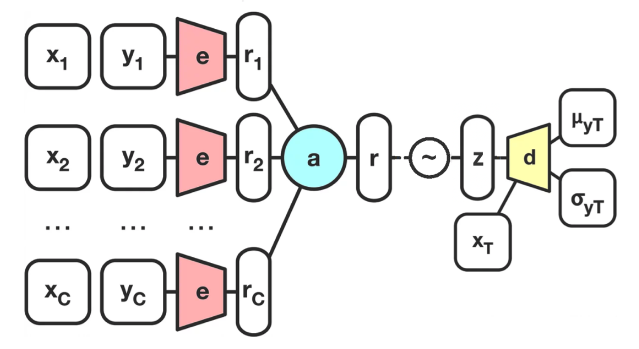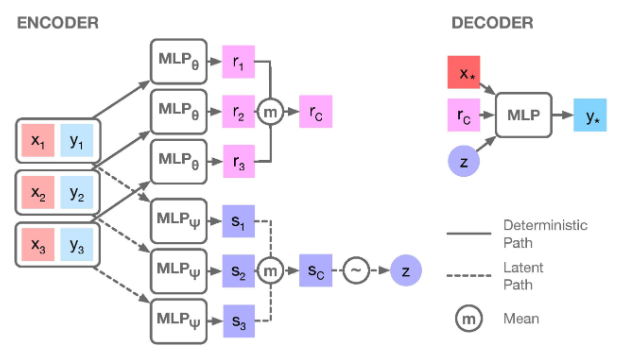Pytorch implementation of Neural Processes. This repo follows the best practices defined in Empirical Evaluation of Neural Process Objectives.
| Function Regression | Image inpainting |
|---|---|
 |
 |
Simple example of training a neural process on functions or images.
import torch
from neural_process import NeuralProcess, NeuralProcessImg
from training import NeuralProcessTrainer
# Define neural process for functions...
neuralprocess = NeuralProcess(x_dim=1, y_dim=1, r_dim=10, z_dim=10, h_dim=10)
# ...or for images
neuralprocess = NeuralProcessImg(img_size=(3, 32, 32), r_dim=128, z_dim=128,
h_dim=128)
# Define optimizer and trainer
optimizer = torch.optim.Adam(neuralprocess.parameters(), lr=3e-4)
np_trainer = NeuralProcessTrainer(device, neuralprocess, optimizer,
num_context_range=(3, 20),
num_extra_target_range=(5, 10))
# Train on your data
np_trainer.train(data_loader, epochs=30)For a detailed tutorial on training and using neural processes on 1d functions, see
the notebook example-1d.ipynb.
To train an image model, use python main_experiment.py config.json. This will log information about training and save model weights.
For a detailed tutorial on how to load a trained model and how to use neural processes for inpainting, see the notebook example-img. Trained models for MNIST and CelebA are also provided in the trained_models folder.
Note, to train on CelebA you will have to download the data from here.
Several people at OxCSML helped me understand various aspects of neural processes, especially Kaspar Martens, Jin Xu, Jef Ton and Hyunjik Kim.
Useful resources:
- Kaspar's blog post
- Official TensorFlow implementation
MIT



